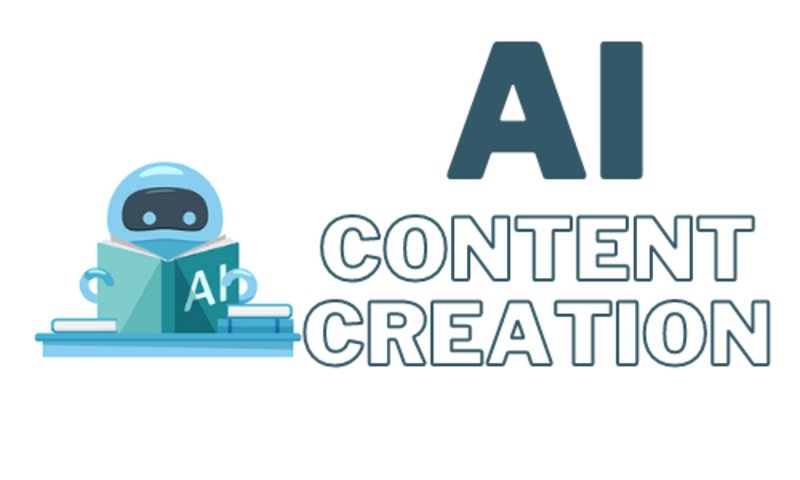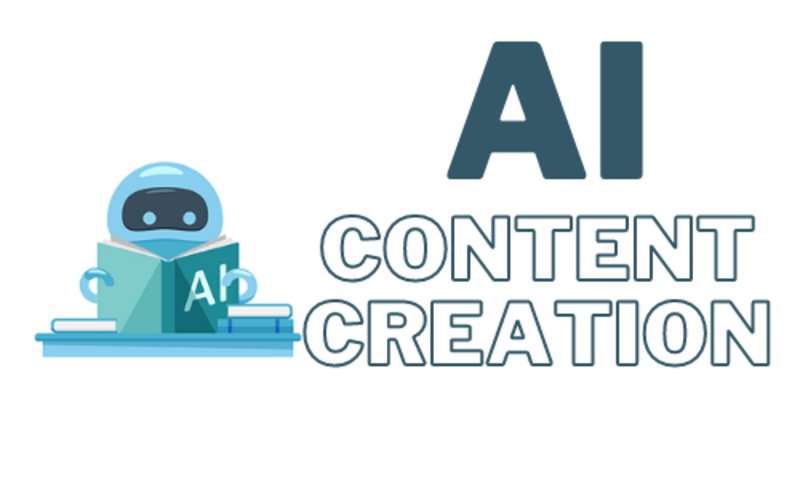This Article has been revised, edited and added to, by Poulomi Chakraborty.
In the age of information overload, capturing and retaining the attention of your audience is more challenging than ever. As marketers, we are constantly seeking innovative ways to engage our audience and convey our messages effectively. One powerful approach that has gained significant traction in recent years is visual storytelling. Visual storytelling combines the art of storytelling with the impact of visual elements to create compelling and memorable content. It’s not just about adding pictures or videos to your content; it’s about crafting a narrative that resonates with your audience on an emotional level.
Visual storytelling has become a cornerstone of modern content marketing because it taps into the natural human affinity for stories and visuals. From ancient cave paintings to the latest Instagram posts, humans have always used visuals to tell stories. This deep-seated connection makes visual storytelling an incredibly effective tool for marketers looking to build strong connections with their audience. By integrating visuals into your storytelling strategy, you can make your content more engaging, easier to understand, and more likely to be shared.
Understanding Visual Storytelling

Visual storytelling involves using images, videos, infographics, and other visual elements to convey a narrative. Unlike traditional text-based content, visual storytelling relies on visual cues to guide the audience through the story.
This method can simplify complex information, evoke emotions, and create a lasting impression. It’s about showing, not just telling, which can make your content more relatable and impactful.
Why Visual Storytelling Matters
The significance of visual storytelling in content marketing lies in its ability to capture attention quickly. In a world where users are bombarded with endless streams of content, standing out is crucial.
Visuals can grab attention in a split second, making them an invaluable asset for marketers. Furthermore, studies have shown that the human brain processes visuals 60,000 times faster than text. This rapid processing means that your audience can understand and remember your message more effectively when it is conveyed visually.
Another reason visual storytelling is so effective is its ability to evoke emotions. Emotions play a crucial role in decision-making, and by connecting with your audience on an emotional level, you can influence their perceptions and actions.
Whether it’s through a heartwarming video, a powerful image, or an inspiring infographic, visual storytelling can elicit emotions that drive engagement and build brand loyalty.
Comparing Visual Storytelling to Traditional Content
To fully appreciate the power of visual storytelling, it’s helpful to compare it with traditional content marketing methods. Traditional content often relies heavily on text, which can be dense and challenging to digest. While well-written text content can be informative and persuasive, it often lacks the immediacy and emotional impact that visuals provide.
For instance, consider a blog post about the benefits of a healthy lifestyle. A text-heavy post might detail the benefits in a well-structured manner, but it might not be particularly engaging.
On the other hand, a visual story could include infographics showing statistical benefits, images of healthy meals, and videos of exercise routines. This multi-faceted approach not only provides the same information but does so in a way that is more engaging and memorable.
Visual Storytelling in Action
One area where visual storytelling excels is social media. Platforms like Instagram, Facebook, and TikTok are inherently visual, making them perfect for visual narratives. Brands that master visual storytelling on these platforms often see higher engagement rates, increased followers, and stronger community bonds.
For example, a fitness brand might use Instagram Stories to take followers through a day in the life of a personal trainer, providing behind-the-scenes insights and tips that text alone could not convey.
Visual storytelling also shines in advertising. Consider a commercial that tells a story in 30 seconds. It combines visuals, sound, and narrative to create a compelling message that resonates with viewers long after they’ve seen it. This kind of storytelling can turn a simple product feature into an emotional experience that viewers associate with your brand.
Crafting Your Visual Storytelling Strategy
To leverage the power of visual storytelling, you need a well-thought-out strategy. This begins with understanding your audience. What are their interests, pain points, and preferences?
Knowing this helps you craft stories that resonate. Next, define the core message you want to convey. A clear, concise message ensures that your visuals are aligned with your brand’s goals.
Choosing the right visual elements is crucial. Different visuals evoke different emotions and responses. Photographs can make your content feel more personal and relatable, while infographics can simplify complex data and make it more digestible. Videos can provide dynamic and engaging narratives that capture attention and convey your message effectively.
Measuring the Impact of Visual Storytelling
As with any marketing strategy, it’s important to measure the impact of your visual storytelling efforts. Metrics such as engagement rates, shares, and conversion rates can provide insights into how your audience is responding. Analyzing these metrics helps you refine your strategy, ensuring that your visual stories continue to engage and resonate with your audience.
Key Elements of Effective Visual Storytelling

Understanding Your Audience
The foundation of any successful visual storytelling strategy is a deep understanding of your audience. Who are they? What are their interests, pain points, and aspirations?
By answering these questions, you can craft stories that resonate on a personal level. Audience personas can be incredibly helpful in this regard. These fictional representations of your ideal customers help you understand their motivations and preferences, allowing you to tailor your visual stories accordingly.
For example, if your target audience consists of young professionals interested in fitness, your visual content might include dynamic workout videos, vibrant images of healthy meals, and infographics highlighting fitness tips. Understanding your audience’s preferences and needs ensures that your visual stories are relevant and engaging.
Crafting a Compelling Narrative
At the heart of visual storytelling is a compelling narrative. A good story captivates the audience, evokes emotions, and drives engagement. Your narrative should have a clear beginning, middle, and end.
Start by setting the scene and introducing the main characters or elements. Build tension or highlight a problem in the middle, and then resolve it with a satisfying conclusion.
For instance, if you’re promoting a travel service, your narrative could follow a couple’s journey from planning their trip to experiencing unforgettable moments in their destination. Use visuals to enhance the story at each stage, such as maps for the planning phase, scenic photos for the journey, and joyful images for the destination experience.
Choosing the Right Visuals
The visuals you choose play a crucial role in the effectiveness of your storytelling. High-quality, relevant visuals can enhance your narrative and make it more engaging. Consider the type of visuals that best suit your story. Photographs, videos, infographics, and illustrations each have their strengths.
Photographs can add a personal touch, making your content more relatable. Videos offer dynamic storytelling possibilities, allowing you to convey complex messages and emotions. Infographics are excellent for simplifying and presenting data in an easily digestible format. Illustrations can add a unique and creative flair to your content, making it stand out.
Consistency and Branding
Consistency is key in visual storytelling. Your visuals should align with your brand’s identity and message. Consistent use of colors, fonts, and styles reinforces your brand and makes your content instantly recognizable. Develop a visual style guide to ensure that all your content adheres to your brand guidelines.
Branding elements, such as logos and taglines, should be subtly integrated into your visuals. However, avoid being too overt, as this can come across as overly promotional. The goal is to weave your brand naturally into the story, creating a seamless and enjoyable experience for your audience.
Leveraging Different Platforms
Different platforms have different strengths when it comes to visual storytelling. Social media platforms like Instagram and TikTok are ideal for short, engaging visuals, while platforms like YouTube are better suited for longer, more detailed videos. Blogs and websites can combine various types of visuals to create comprehensive and immersive stories.
Understanding the unique characteristics of each platform allows you to tailor your visual stories for maximum impact. For example, Instagram Stories are perfect for behind-the-scenes glimpses, while Pinterest is great for visually rich content like recipes, fashion tips, or DIY projects.
Emotional Connection
Emotional connection is a powerful component of visual storytelling. Stories that evoke emotions are more likely to be remembered and shared. Whether it’s joy, nostalgia, excitement, or empathy, tapping into your audience’s emotions can create a lasting impact.
Consider the emotions you want to evoke with your story. Use visuals that support these emotions. For instance, a heartwarming story about community support during difficult times can be enhanced with images of people helping each other, smiling faces, and scenes of togetherness.
Interactive and Immersive Experiences
Interactive and immersive experiences are becoming increasingly popular in visual storytelling. Technologies like virtual reality (VR) and augmented reality (AR) offer new ways to engage your audience. These technologies can create a sense of presence and immersion, making your stories more impactful.
For example, a real estate company might use VR to offer virtual tours of properties, allowing potential buyers to explore homes from the comfort of their own space. AR can be used in retail to let customers virtually try on clothes or see how furniture would look in their homes. These interactive experiences not only engage the audience but also provide practical value.
Storytelling Through User-Generated Content
User-generated content (UGC) is a powerful way to incorporate visual storytelling into your marketing strategy. UGC includes photos, videos, reviews, and other content created by your customers. Sharing UGC adds authenticity to your brand and builds trust with your audience.
Encourage your customers to share their stories related to your brand. For example, a fitness brand might ask customers to share their fitness journeys using a specific hashtag. Featuring these stories on your social media platforms not only provides fresh content but also fosters a sense of community.
Creating Engaging Visual Content

The Power of Video
Video is one of the most powerful tools in visual storytelling. It combines visuals, audio, and motion to create a rich, immersive experience. Videos can simplify complex ideas, evoke emotions, and engage audiences in a way that static images or text alone cannot.
Whether it’s a short social media clip, a detailed product demo, or a compelling brand story, video content can significantly boost your marketing efforts.
To create engaging video content, start with a clear plan. Define the message you want to convey and the audience you want to reach. Use a script to outline the key points and ensure your video has a logical flow.
High-quality production values, including good lighting, clear audio, and sharp visuals, are essential for maintaining viewer interest. Incorporate storytelling techniques, such as character development, conflict, and resolution, to make your video more engaging.
The Role of Infographics
Infographics are a fantastic way to present data and information in a visually appealing and easy-to-understand format. They combine text, images, and design elements to tell a story or explain a concept. Infographics are particularly effective for simplifying complex data, making it more accessible to your audience.
When creating infographics, focus on clarity and simplicity. Use a clean design with plenty of white space to avoid overwhelming the viewer. Highlight key data points and use visuals, such as charts, graphs, and icons, to illustrate your points.
A well-designed infographic should guide the viewer through the information in a logical and engaging way. Ensure your infographics are shareable by optimizing them for social media and including your branding elements.
The Impact of Photography
High-quality photography can greatly enhance your visual storytelling. Photographs add a personal and human touch to your content, making it more relatable and engaging. Whether you’re using professional photos or user-generated content, the right images can tell a powerful story.
Choose photographs that align with your brand’s message and resonate with your audience. Authenticity is key, so opt for images that feel real and relatable rather than overly staged or polished.
Use images to highlight your product in use, showcase happy customers, or tell a visual story that complements your written content. Consistent style and quality in your photography help to reinforce your brand identity and build recognition.
Incorporating Illustrations
Illustrations offer a unique and creative way to tell your story. They can add a distinctive visual style to your content, making it stand out from the competition. Illustrations are versatile and can be used to convey abstract concepts, add humor, or create a specific mood.
When incorporating illustrations into your visual storytelling, consider how they align with your brand’s overall aesthetic. Custom illustrations can be tailored to fit your brand’s personality and message.
Use illustrations to complement your written content, explain complex ideas, or add visual interest to your website, social media, and marketing materials.
Utilizing Visual Consistency
Visual consistency is crucial for effective visual storytelling. Consistency in your visual elements, such as colors, fonts, and styles, helps to reinforce your brand identity and create a cohesive experience for your audience. A consistent visual style makes your content instantly recognizable and helps to build trust with your audience.
Develop a visual style guide that outlines your brand’s visual elements and how they should be used. This guide should include specifications for colors, typography, image styles, and any other design elements that are part of your brand’s identity. Ensure that all your visual content adheres to this guide, whether it’s created in-house or by external designers.
The Benefits of Animation
Animation can bring your visual stories to life in a way that static images or text cannot. It adds movement and dynamism to your content, making it more engaging and memorable. Animations can be used to explain complex concepts, tell a story, or add visual interest to your website and social media.
When creating animations, focus on simplicity and clarity. Overly complex animations can be distracting and hard to follow. Use animation to highlight key points and guide the viewer through your story. Short, looping animations, known as GIFs, are particularly effective for capturing attention on social media.
Combining Different Visual Elements
One of the strengths of visual storytelling is the ability to combine different types of visuals to create a rich, multifaceted story. For example, a blog post can include photographs, infographics, and videos to convey information in multiple ways. A social media campaign can use a mix of images, GIFs, and short videos to engage followers.
When combining different visual elements, ensure that they work together cohesively. Each element should support the overall narrative and contribute to the message you’re trying to convey. Balance is key – too many visuals can overwhelm the viewer, while too few can make your content feel flat.
Measuring the Success of Your Visual Content
To ensure that your visual storytelling efforts are effective, it’s important to measure their impact. Use analytics tools to track key metrics, such as engagement rates, shares, and conversion rates. These metrics can provide insights into how your audience is responding to your visual content.
Analyze the performance of different types of visuals to understand what resonates best with your audience. For example, you might find that videos generate more engagement on social media, while infographics are more effective in blog posts. Use these insights to refine your visual storytelling strategy and focus on the types of content that drive the best results.

Visual Storytelling Across Different Channels
Social Media Platforms
Social media platforms are a natural fit for visual storytelling, offering a variety of formats to engage your audience. Each platform has its own unique characteristics and audience preferences, so it’s important to tailor your visual content accordingly.
Instagram is a highly visual platform, perfect for sharing photos, short videos, and stories. Utilize Instagram Stories and Reels for behind-the-scenes content, quick tips, or promotional offers. High-quality images and aesthetically pleasing feeds can captivate users and encourage them to follow your brand.
Facebook allows for a diverse range of content types, from images and videos to live streams and infographics. Videos and live streams tend to perform well, as they encourage interaction and can be easily shared. Utilize Facebook’s ad platform to reach a broader audience with visually compelling ads.
TikTok is all about short, engaging videos. Creativity and authenticity are key on this platform. Use TikTok to create fun, memorable content that resonates with younger audiences. Challenges, trends, and user-generated content can boost engagement and visibility.
Pinterest is ideal for sharing visually rich content like infographics, DIY guides, and inspiration boards. Create pins that link back to your website or blog, driving traffic and potential conversions. Ensure your pins are visually appealing and optimized for Pinterest’s vertical format.
LinkedIn is a professional network where visual storytelling can be used to highlight company culture, share industry insights, and showcase products or services. Infographics and videos can effectively communicate complex information and engage a professional audience.
Blogs and Websites
Visual storytelling can enhance the user experience on blogs and websites, making content more engaging and easier to digest. Incorporate a mix of visual elements such as images, videos, infographics, and illustrations to break up text and add visual interest
Use images to complement your written content, illustrate key points, and make your posts more attractive. High-quality, relevant photos can make your content more relatable and visually appealing.
Videos are a powerful tool for explaining concepts, demonstrating products, and sharing customer testimonials. Embed videos within your blog posts to keep readers engaged and on your site longer.
Infographics can simplify complex information and present data in an engaging way. Use infographics to summarize key points, provide visual explanations, and make your content more shareable.
Interactive elements like sliders, quizzes, and polls can engage users and provide a more dynamic experience. These elements encourage user interaction and can help keep visitors on your site longer.
Email Marketing

Email marketing campaigns can benefit greatly from visual storytelling. Visual content can make your emails more engaging and increase click-through rates.
Images can grab attention and convey your message quickly. Use images that are relevant to your content and align with your brand’s visual style. Ensure they are optimized for email to avoid slow load times.
GIFs and animations can add a dynamic element to your emails, making them more eye-catching and engaging. Use animations to highlight products, demonstrate features, or simply add visual interest.
Infographics can provide a quick visual summary of the information in your email. They are particularly effective for newsletters and content-heavy emails, helping to break up text and present information clearly.
Videos can be embedded in emails to provide more in-depth content, such as product demos, customer testimonials, or brand stories. Including a video thumbnail that links to a landing page can also drive traffic to your website.
Advertising Campaigns
Visual storytelling is crucial in advertising, where capturing attention quickly is essential. Both digital and traditional ads can benefit from strong visual narratives.
In digital advertising, use a combination of images, videos, and interactive elements to engage viewers. Video ads can tell a story in a short amount of time, making them highly effective for brand awareness and engagement. Display ads should use eye-catching images and concise, compelling messages to drive clicks and conversions.
Social media ads should be tailored to the platform and audience. On Instagram and Facebook, carousel ads allow you to tell a story across multiple images or videos. On TikTok, short, engaging videos that align with platform trends can capture attention and drive engagement.
For traditional advertising such as print ads, billboards, and TV commercials, visuals are equally important. High-quality photography, compelling visuals, and strong storytelling can make your ads more memorable and effective. Ensure that your visuals align with your overall brand message and appeal to your target audience.
Utilizing User-Generated Content
User-generated content (UGC) is a powerful tool in visual storytelling. It adds authenticity and builds trust, as real customers share their experiences with your brand.
Encourage your customers to share photos and videos of themselves using your products or services. Feature this content on your social media platforms, website, and marketing materials. Highlighting UGC not only provides fresh content but also fosters a sense of community and loyalty among your customers.
Create campaigns or contests that encourage UGC. For example, ask customers to share their favorite product moments with a specific hashtag for a chance to be featured. This not only generates valuable content but also increases brand visibility and engagement.
Cross-Platform Consistency
Maintaining consistency across different channels is crucial for effective visual storytelling. Your visual content should align with your brand’s overall aesthetic and message, regardless of the platform.
Use a consistent color scheme, typography, and visual style across all your channels. This creates a cohesive brand identity and makes your content instantly recognizable. Consistent visual elements help to reinforce your brand and build trust with your audience.
Ensure that your visual stories are adaptable to different formats and platforms. For example, a video created for YouTube should be easily repurposed for shorter clips on Instagram or TikTok. Infographics created for your blog can be shared on Pinterest or LinkedIn.
Strategies for Effective Visual Storytelling
Developing a Visual Storytelling Strategy
Creating a successful visual storytelling strategy starts with a clear understanding of your goals and objectives. What do you want to achieve with your visual content? Whether it’s increasing brand awareness, driving engagement, or boosting conversions, having specific goals helps guide your efforts and measure success.
Start by conducting a thorough analysis of your audience. Identify their preferences, behaviors, and pain points. Use this information to craft stories that resonate with them. Audience personas can be a helpful tool in this process, providing detailed insights into the characteristics and motivations of your ideal customers.
Define the core message you want to convey through your visual storytelling. This message should align with your brand’s values and objectives. Ensure that every piece of visual content supports this core message, creating a cohesive and consistent narrative.
Storyboarding Your Visuals
Storyboarding is a crucial step in the visual storytelling process. It involves creating a visual plan for your story, outlining the key scenes and elements. This helps you organize your ideas and ensure that your narrative flows smoothly.
Start by sketching out the main scenes of your story. Identify the key elements you want to include, such as characters, settings, and actions. Consider how each scene connects to the next and how they collectively convey your message.
A storyboard also helps you plan the visual style and composition of your content. Think about the colors, lighting, and angles that best convey the mood and tone of your story. Storyboarding allows you to experiment with different ideas and refine your visuals before moving on to production.
Crafting Engaging Visual Narratives
Creating engaging visual narratives requires a balance of creativity and strategy. Start with a strong hook that captures your audience’s attention. This could be an intriguing image, a compelling character, or an unexpected scenario. The opening of your story should pique curiosity and encourage viewers to keep watching or reading.
Develop your characters and plot in a way that resonates with your audience. Characters should be relatable and evoke empathy. The plot should build tension or present a problem that needs solving, keeping viewers engaged and invested in the outcome.
Use visual elements to enhance your narrative. Composition, color, and lighting all play a role in conveying emotions and guiding the viewer’s attention. Experiment with different visual techniques to create a dynamic and immersive story.
Leveraging Visual Hierarchy
Visual hierarchy is a design principle that guides the viewer’s eye through your content in a deliberate way. By strategically arranging visual elements, you can ensure that your audience notices the most important parts of your story.
Start by identifying the key focal points of your content. These could be headlines, images, or calls to action. Use size, color, and placement to draw attention to these focal points. Larger elements and contrasting colors naturally attract the eye, so use them to highlight critical parts of your story.
Balance your composition to create a smooth visual flow. Use spacing and alignment to organize your elements and guide the viewer from one point to the next. A well-structured visual hierarchy makes your content easier to follow and more engaging.
Using Color and Lighting

Color and lighting are powerful tools in visual storytelling. They can set the mood, evoke emotions, and highlight important elements. Understanding how to use these tools effectively can significantly enhance your visual content.
Color theory provides insights into how different colors interact and the emotions they evoke. Warm colors like red and yellow can create a sense of energy and excitement, while cool colors like blue and green can evoke calm and tranquility. Choose a color palette that aligns with your story’s mood and your brand’s identity.
Lighting also plays a crucial role in setting the tone of your visuals. Bright, natural lighting can create a cheerful and inviting atmosphere, while low, dramatic lighting can add tension and mystery. Experiment with different lighting setups to find the best fit for your story.
Integrating Text and Visuals
While visuals are the primary focus of visual storytelling, integrating text can enhance your message and provide additional context. Text can clarify complex ideas, highlight key points, and guide the viewer’s understanding.
Use text sparingly and strategically. Overloading your visuals with text can be overwhelming and detract from the visual impact. Instead, use concise, impactful text that complements your visuals. Captions, titles, and callouts can provide valuable context without cluttering your design.
Ensure that your text is legible and contrasts well with your background. Choose fonts that align with your brand’s style and are easy to read. The placement of text should guide the viewer’s eye and support the overall visual hierarchy.
Creating a Consistent Visual Style
A consistent visual style is crucial for building a strong brand identity and creating a cohesive visual storytelling experience. Consistency in your visual elements helps reinforce your brand and makes your content more recognizable.
Develop a visual style guide that outlines the key elements of your visual identity, including color palettes, typography, imagery styles, and graphic elements. This guide should be used across all your visual content to ensure consistency.
Consistency doesn’t mean uniformity. While your visual style should be consistent, it should also be flexible enough to adapt to different contexts and platforms. The goal is to create a cohesive look and feel that aligns with your brand while allowing for creativity and variety in your storytelling.
Analyzing and Optimizing Visual Content
Measuring the success of your visual storytelling efforts is essential for continuous improvement. Use analytics tools to track key metrics, such as engagement rates, shares, and conversions. These metrics can provide insights into how your audience is responding to your visual content.
Regularly review and analyze your visual content performance. Identify patterns and trends in the data to understand what works and what doesn’t. Use these insights to refine your visual storytelling strategy and focus on the types of content that drive the best results.
Experiment with different visual elements and techniques to see what resonates with your audience. A/B testing can be a valuable tool for comparing different visual approaches and optimizing your content for maximum impact.
Staying Updated with Visual Trends
The world of visual storytelling is constantly evolving, with new trends and technologies emerging regularly. Staying updated with these trends can help you keep your content fresh, relevant, and engaging.
Follow industry blogs, attend webinars, and participate in professional communities to stay informed about the latest developments in visual storytelling. Experiment with new tools and techniques to see how they can enhance your visual content.
While it’s important to stay current with trends, it’s also crucial to stay true to your brand’s identity and values. Use trends as inspiration and adapt them in a way that aligns with your brand’s unique voice and message.
Conclusion
Visual storytelling has become a cornerstone of modern content marketing, offering a powerful way to engage audiences, convey messages, and build brand loyalty. By understanding your audience, crafting compelling narratives, and leveraging the right visual elements, you can create content that resonates deeply and drives meaningful results.
Whether through video, photography, infographics, or illustrations, the key is to tell a cohesive, emotionally engaging story that aligns with your brand’s identity. Consistent visual style and strategic use of text enhance the impact of your visuals, while regular analysis and adaptation ensure ongoing success. As trends and technologies evolve, staying informed and flexible will help you keep your visual storytelling fresh and effective. Embrace the art of visual storytelling to connect with your audience in more profound and memorable ways.
Read Next
- The Power of Data Analytics in Refining Your Digital Marketing Strategy
- Niche Digital Marketing: Targeting Specific Audiences for Maximum Impact
- Digital Marketing for Local Businesses: Engaging Your Community Effectively
- The Synergy of SEO and Digital Marketing: A Winning Combination
- Digital Marketing on a Budget: Maximizing Impact with Limited Resources






















Comments are closed.